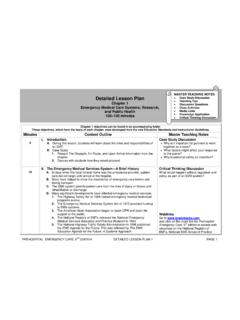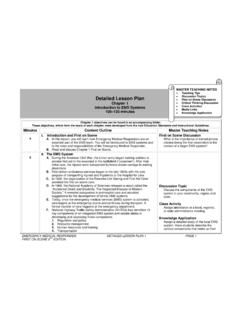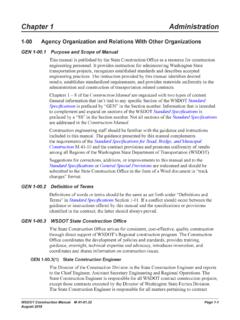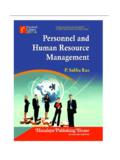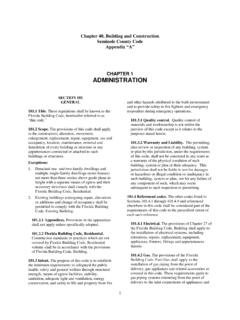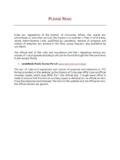Transcription of Handout 1-1 Student’s Name Chapter 1: Introduction to EMS ...
1 Handout 1-1 Student's Name _____. Chapter 1: Introduction to EMS Systems--Quiz Circle the letter of the best answer to each multiple-choice question. 1. As an Emergency Medical Responder, which of the following should you set as your top priority at the scene of an emergency? a. CPR. b. Safety c. Patient care d. Traffic control 2. An Emergency Medical Responder possesses all of the following skills EXCEPT: a. defibrillation. b. oxygen administration. c. medication administration. d. bleeding control. 3. Emergency Medical Responder care is usually authorized by: a. the National Registry. b. state laws. c. the patient's physician. d. department bylaws. 4. The _____ is involved in quality improvement and protocol development. a. Medical Director b. chief of the emergency department c. EMT. d. agency administrator 5.
2 The highest level of EMS provider is: a. Advanced Emergency Medical Technician. b. Emergency Medical Technician. c. Emergency Transport Technician. d. Paramedic. 6. A 47-year-old patient has been injured in a serious motor vehicle crash. Which is the most appropriate specialty hospital for this patient? a. Pediatric center b. Trauma center c. Cardiovascular care center d. Stroke center 7. According to the National Highway Traffic Safety Administration (NHTSA of the United States Department of Transportation), how many classic components make up an EMS system? a. 5. b. 15. c. 10. d. 20. 8. One of the important components of the medical legal standards in patient care is: a. confidentiality. b. community relations. c. communications. d. advocacy. 9. The place where 911 calls are answered is called a: a. dispatch headquarters.
3 B. communication coordination center. c. public safety answering point. d. radio call center. 10. Demeanor is part of professionalism for the Emergency Medical Responder, and it has which of the following as an attribute? a. Advanced education b. A take-charge attitude c. Fearlessness d. Respect 2012 by Pearson Education, Inc. EMR 9. Handout 1-2 Student's Name _____. The Call: First on Scene Read the scenario. Then, in the space provided, answer the questions that follow. You and your partner are assigned to EMS Unit 5 one morning in September. At 10:35 , the emergency dispatcher directs you to a collision on Pumpkin Hollow Road. Someone called to report that the car ahead of her had swerved to avoid a dog, gone off the road, plunged into a ditch, and hit a tree. Dispatch reports that an ambulance is en route and will arrive on scene in about 15 minutes.
4 Your unit pulls up to the scene six minutes later. After determining that the scene is safe to enter, you approach the crash site. As you don your personal protective equipment, you focus on the young man sitting on the ground beside the crashed car. His shirt and pants are soaked with blood. He is apparently alert and is holding his wrist tightly with his other hand. The patient tells you that after the crash, he had not believed himself injured and so attempted to get out of the car. In doing so, he sliced his wrist on jagged metal. He tells you that he had been wearing a seat belt. Your partner applies direct pressure to the wound. Meanwhile, you introduce yourself to the patient and begin your assessment of his condition. The patient seems anxious and restless. As you continue to assess him, you explain what you are doing and try to calm him.
5 Because of the possible mechanisms of injury involved in the crash, you are especially alert to the possibility of spine and other internal injuries. You administer high- flow oxygen to the patient and join your partner in manually stabilizing the patient to avoid any further injury. Seven minutes later, the Paramedics arrive. You provide them with a concise report of the patient's condition and your interventions. The Paramedics assume care of the patient, contact medical direction, and report on their findings and expected time of arrival at the hospital. Just a few minutes after 11:00 , the ambulance reaches the hospital. The Paramedics brief the emergency department staff on the patient's status and the care that he has received. The hospital crew takes over and wheels the young man off to surgery. 1. What EMS resources are involved in this scenario?
6 2. What roles/responsibilities and examples of professionalism for an Emergency Medical Responder are demonstrated in this scenario? 2012 by Pearson Education, Inc. EMR 9. Handout 1-3 Student's Name _____. Chapter 1 Review In the space provided, write the word or words that best complete each sentence. 1. In general, the _____ _____ _____ system is a network of resources, from 911 to the emergency department, that provides emergency medical care to victims of sudden illness or injury. 2. A typical example of an emergency call begins with a member of the public calling _____ or another emergency number. 3. An important member of the EMS team, the Emergency Medical _____, receives the emergency call at a public safety answering point. 4. An emergency communication system that automatically records a caller's phone number and location is known as a(n) _____ 911 system.
7 5. There are four levels of training. They are _____, _____, _____, and _____. 6. A(n) _____ _____ _____ is the first person with emergency medical training on the scene. 7. At the next level of EMS training after Emergency Medical Responder, the _____ can also perform complex immobilization procedures, restrain patients, and staff and drive ambulances. 8. _____ _____ is a dynamic system for continually evaluating and improving care. 9. _____ _____ involves a physician Medical Director in quality improvement and developing protocols. 10. The _____ of _____ _____ is a national model that defines the scope of care for all levels of EMS training. 2012 by Pearson Education, Inc. EMR 9. Handout 1-4 Student's Name _____. True or False Indicate if each of the following statements is true or false by writing T or F in the space provided.
8 _____ 1. As an Emergency Medical Responder, you provide emergency care that comforts a patient at the height of crisis. _____ 2. Emergency Medical Responders may be called to emergencies in which they are the only trained rescuers on scene. _____ 3. As an Emergency Medical Responder, you must consider your own safety only after you have provided emergency care to your patients. _____ 4. Being well-dressed and groomed is not important to the professional responsibilities of an Emergency Medical Responder. _____ 5. When a patient needs transport to a hospital, you may leave the scene after you verify that an ambulance will arrive within five minutes. _____ 6. Once an Emergency Medical Responder has provided care, he must continue to do so until it is turned over to another qualified provider. _____ 7. Professionalism means, in the most important sense, that the Emergency Medical Responder is perceived as a caring and competent member of the EMS system.
9 _____ 8. One of the factors in professionalism is patient advocacy. _____ 9. A trained Emergency Medical Responder will always perform without making errors. _____ 10. A trauma center is a medical facility specializing in the treatment of pediatric care. 2012 by Pearson Education, Inc. EMR 9. Answer Key Handout 1-1: Chapter 1 Quiz 1. b 2. c 3. b 4. a 5. d 6. b 7. d 8. a 9. c 10. d Handout 1-2: The Call: First on Scene 1. a 911 dispatcher, Emergency Medical Responders, Paramedics, a medical director, and a hospital emergency department 2. Possible answers include the following: personal safety, patient assessment and administering of care, maintaining a caring and compassionate attitude, continuity of care, emotional support, and communications. Handout 1-3: Chapter 1 Review 1. emergency medical services 2. 911.
10 3. dispatcher 4. enhanced 5. Emergency Medical Responder, Emergency Medical Technician, Advanced EMT, Paramedic 6. Emergency Medical Responder 7. Emergency Medical Technician 8. Quality improvement 9. Medical oversight 10. Scope of Practice Model Handout 1-4: True or False 1. T. 2. T. 3. F. 4. F. 5. F. 6. T. 7. T. 8. T. 9. F. 10. F. 2012 by Pearson Education, Inc. EMR 9. Handout 2-1 Student's Name _____. Chapter 2: Legal and Ethical Principles of Emergency Care--Quiz Circle the letter of the best answer to each multiple-choice question. 1. Patients of legal age who are competent and who accept your care are giving _____ consent. a. implied b. expressed c. guardian d. minor's 2. In an emergency in which a patient is so severely injured that a clear decision cannot be made, you have the right to provide care based on _____ consent.
